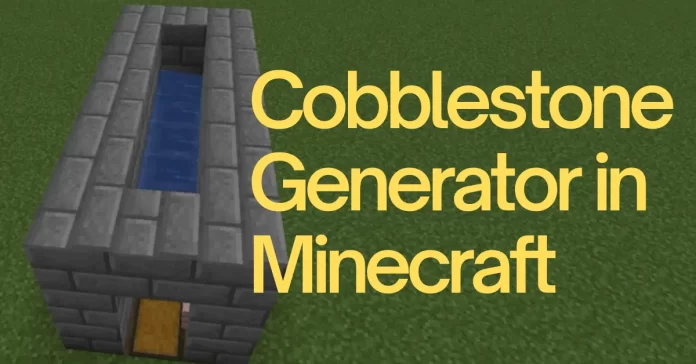In Short for How to Make a Cobblestone Generator in Minecraft
- The simplest cobblestone generator is crucial for skyblock maps and uses minimal resources.
- A popular cobblestone generator design is compact and includes block collection.
- A fully automated version exists but requires more resources.
- Cobblestone is a renewable resource essential for builds and crafting.
What Is a Cobblestone Generator?
A cobblestone generator is a simple mechanic in Minecraft that utilizes the interaction between water and lava to produce cobblestone blocks.
- Flowing water over still lava = Obsidian
- Flowing lava over still water = Stone
- Flowing lava + flowing water = Cobblestone
Cobblestone generators allow for infinite cobblestone blocks. By tweaking the design, stone can also be generated with the silk touch enchantment.
Method 1: Simple Cobblestone Generator (Easiest Design)
Materials:
- 1 Lava Bucket
- 1 Water Bucket (or ice block)
Steps:
- Dig a 4-block-long, 1-block-wide trench.
- Break the second block from one end of the trench.
- Pour water at one end of the trench (closest to the broken block).
- Pour lava at the opposite end.
Result: Cobblestone generates where the water meets lava. This design is essential in resource-limited environments like Skyblock.
Method 2: Popular Cobblestone Generator Design
Materials:
- 2 Water Buckets
- 1 Lava Bucket
- 5 Hoppers
- 5 Stairs (non-flammable)
- 2 Chests
- Solid blocks (non-flammable)
- 1 Sign
Steps:
- Place a double chest on the ground.
- Attach 5 hoppers to the chest.
- Surround the hoppers with solid blocks.
- Place 5 stairs on top of the solid blocks.
- Waterlog the stairs.
- Place more solid blocks on top, creating a ring above the waterlogged stairs.
- Place lava one block above the waterlogged stairs.
Result: Continuous cobblestone generation. Blocks automatically collect in the chest.
Method 3: Piston-Based Cobblestone Generator
Materials:
- 2 Water Buckets
- 1 Lava Bucket
- 8 Pistons
- 11 Redstone Dust
- 2 Redstone Torches
- 1 Redstone Repeater
- 5 Stairs (non-flammable)
- Solid Blocks (non-flammable)
- 1 Lever
Steps:
- Create a 5-block-long trench and waterlog the stairs.
- Build solid blocks around the stairs and place pistons above.
- Attach redstone dust behind the pistons.
- Place a redstone torch and repeater to activate the pistons.
- Pour lava above the stairs.
- Use the lever to activate and deactivate the pistons.
Result: Pistons push cobblestone toward the player, increasing efficiency.
Method 4: Fully Automated Cobblestone Generator
Materials:
- Water and Lava Buckets
- 7 Sticky Pistons
- 5 Pistons
- 5 Target Blocks
- 6 Slime Blocks
- 2 Observers
- 1 TNT
- 1 Detector Rail
- 1 Minecart
- 1 Fence
- 3 Fence Gates
- 3 Hoppers
- Redstone Components (dust, repeaters, comparators)
- Obsidian
- Solid Blocks
Steps:
- Build a standard cobblestone generator.
- Attach pistons and sticky pistons to push generated cobblestone.
- Create a TNT duper with slime blocks, rails, and a minecart.
- Position TNT to destroy cobblestone, allowing automatic collection.
- Add hoppers beneath for cobblestone collection.
Result: Fully automated cobblestone production without manual mining.
Conclusion
Cobblestone generators are essential in Minecraft for resource farming. From basic to advanced designs, each method provides cobblestone efficiently, enabling unlimited building potential. Choose the design based on available resources and automation preferences.
Looking for more tips? Check out our guides on the best weapons, builds, and strategies in Gaming.
